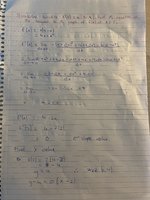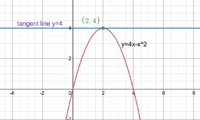Nothing wrong with your first step.
[MATH]f(x) = x(4 - x) \implies f(x) = 4x - x^2.[/MATH]
My suggestion is that you deal with the Newton quotient before you worry about the limit and go step by step. I am going to use h rather than Delta x. (Makes no difference)
So what is f(x + h)? Work it out carefully.
[/
Nothing wrong with your first step.
[MATH]f(x) = x(4 - x) \implies f(x) = 4x - x^2.[/MATH]
My suggestion is that you deal with the Newton quotient before you worry about the limit and go step by step. I am going to use h rather than Delta x. (Makes no difference)
So what is f(x + h)? Work it out carefully.
As you can see from my working i have tried to work out f(x+h), that is little help to me. if you could properly assist with solving the equation, which will in the future help me solve alternative equations that would be great!


